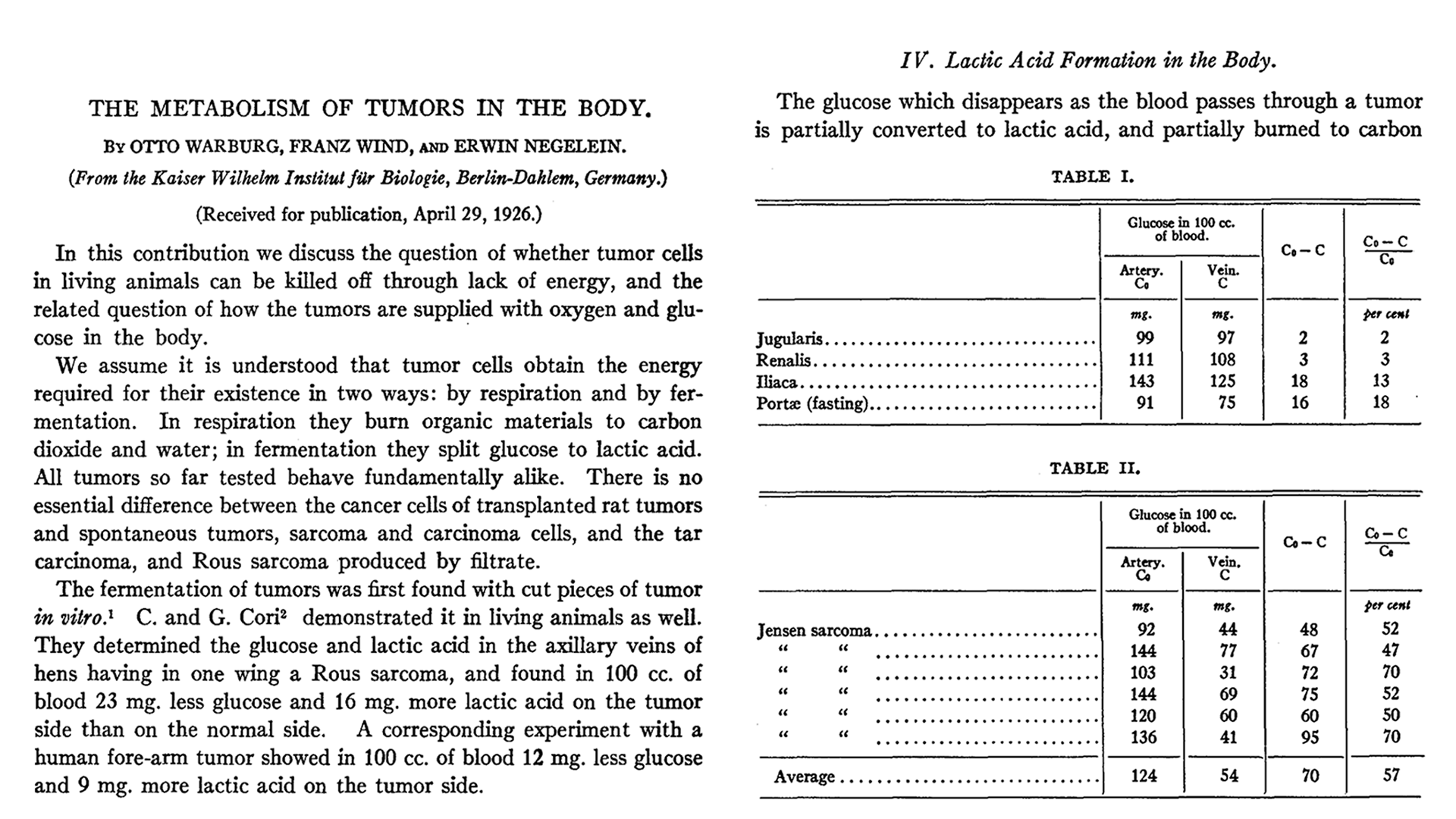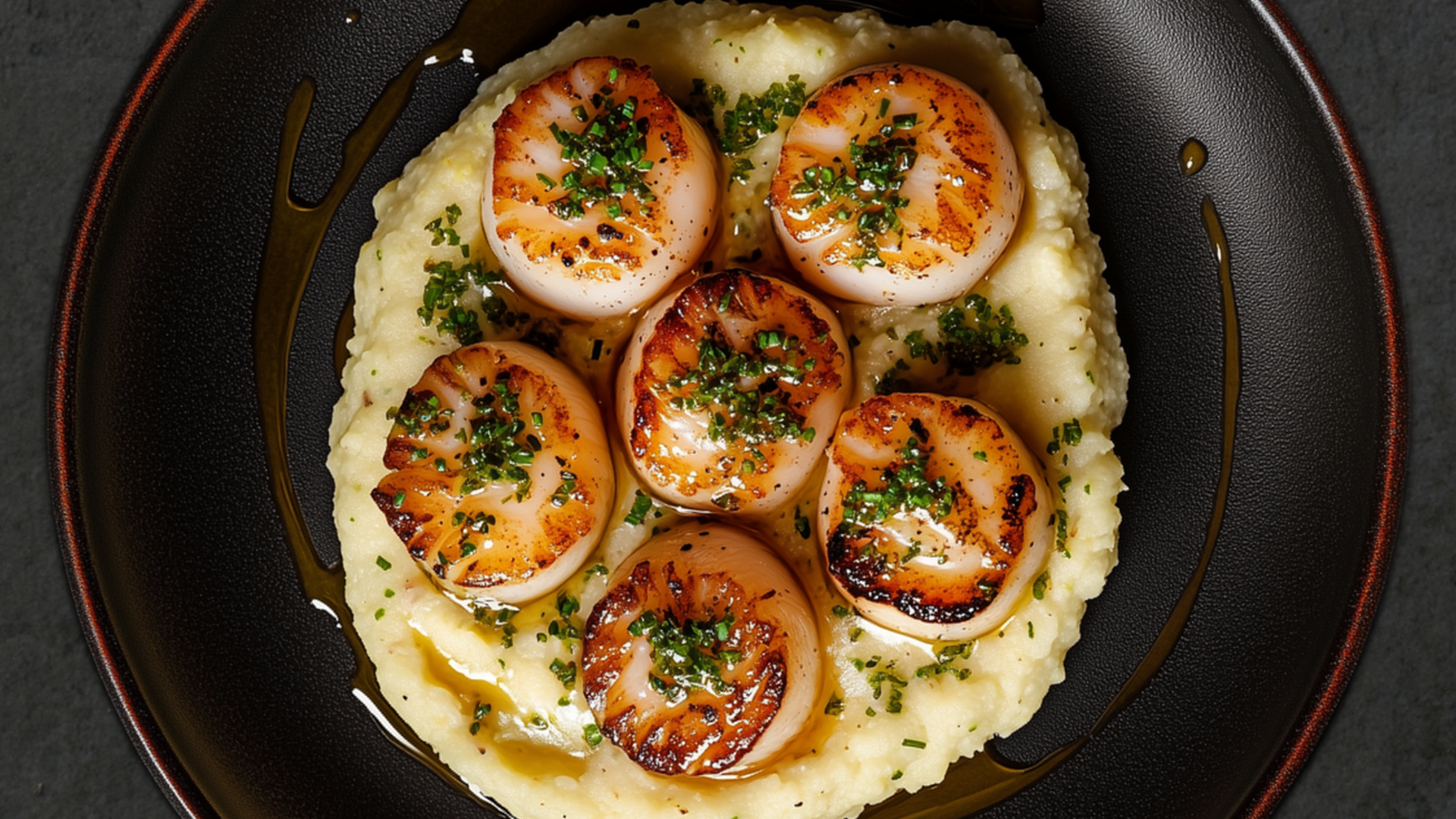The
Daily
Fix
For load:
Seared Scallops with Cauliflower Purée and Chive Oil
The Metabolism of Tumors in the Body

Power snatch 3-3-3-3-3-3-3 reps
Seared scallops served over a creamy cauliflower purée, finished with a vibrant drizzle of fresh chive oil.
Otto Warburg’s 1926 paper that introduced the 'Warburg Effect`
Then, practice SLIPS for 30 minutes.
Compare to 250423.
Post loads to comments.
Ingredients
For the Scallops
6 large sea scallops, patted dry
1 Tbsp butter (for searing)
½ tsp sea salt
¼ tsp black pepper
1 Tbsp olive oil (for finishing)
For the Cauliflower Purée
1½ cups cauliflower florets
2 Tbsp butter
2 Tbsp full-fat sour cream
½ tsp sea salt
¼ tsp black pepper
For the Chive Oil
2 Tbsp fresh chives, finely chopped
2 Tbsp olive oil
Pinch of sea salt
Macronutrients
Protein: 30g
Fat: 70g
Carbs: 9g
Preparation
Prepare the Cauliflower Purée: Steam the cauliflower florets (1½ cups) until very tender, about 8–10 minutes. Transfer to a blender or food processor. Add butter (2 Tbsp), sour cream (2 Tbsp), sea salt (½ tsp), and black pepper (¼ tsp). Blend until smooth and creamy.
Keep warm until ready to serve.
Prepare the Chive Oil: In a small bowl, stir together the chopped chives (2 Tbsp), olive oil (2 Tbsp), and a pinch of sea salt. Set aside to infuse while you cook the scallops.
Sear the Scallops: Pat the scallops (6 scallops) very dry with paper towels.
Season with sea salt (½ tsp) and black pepper (¼ tsp). Melt the butter (1 Tbsp) in a hot skillet over medium-high heat. Sear the scallops without moving them for 2–3 minutes until a golden crust forms. Flip and sear the other side for 1–2 minutes until just cooked through and still tender. Remove from heat and drizzle lightly with olive oil (1 Tbsp).
Assemble the Dish: Spoon a bed of cauliflower purée onto each plate. Top with seared scallops. Drizzle the chive oil over and around the scallops. Serve immediately for best texture and flavor.
His paper explored how tumor cells obtain energy and whether they can be killed by depriving them of glucose and oxygen. His findings laid the groundwork for understanding cancer metabolism and are foundational to what became known as the ‘Warburg effect’—the observation that cancer cells preferentially generate energy by fermenting glucose into lactic acid, even in the presence of oxygen. Unlike normal cells, which rely primarily on aerobic respiration, this metabolic shift supports rapid growth and survival in the often low-oxygen environments of tumors.

*no SLIPS, triplet workout instead